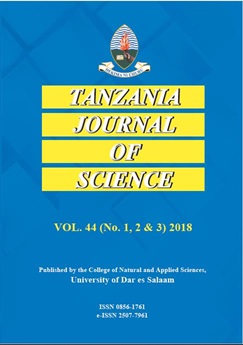Identifying Factors Contributing to Under-Five Mortality in Nigeria
DOI:
https://doi.org/10.4314/tjs.v49i2.4Abstract
The under-5 mortality rate (U5MR) is the probability that a child born in a specified year will die before turning 5 years of age. U5MR is still high in Nigeria. Therefore, this study aimed to identify factors contributing to under-5 mortality in Nigeria. The data used in this study were from the 2018 NDHS, encompassing 2013 €“2018. The methods of analysis used for this study were frequency, percentage, and Zero Inflated Negative Binomial (ZINB) regression. Data were analyzed using R programming v.4.1.2 and p < 0.05 was considered to be statistically significant. The result showed 35.4% under-5 mortality out of the 33,924 infant mortality sample data that were collected. The findings revealed maternal age, regions (North East and North West), maternal education (no education), wealth index (poorest households), and size of child at birth (very small birth size) as significant factors associated with under-5 mortality in Nigeria. The results also showed that the odds of under-5 mortality increase as the age of the mother increases. Therefore, the Nigerian government should understand that poverty is not just an economic problem but also a significant factor in health; as a result, the battle against poverty needs to receive the necessary attention.
Keywords: Under-5 mortality; World Health Organization; Zero inflated distribution; Risk factors; Nigeria.


